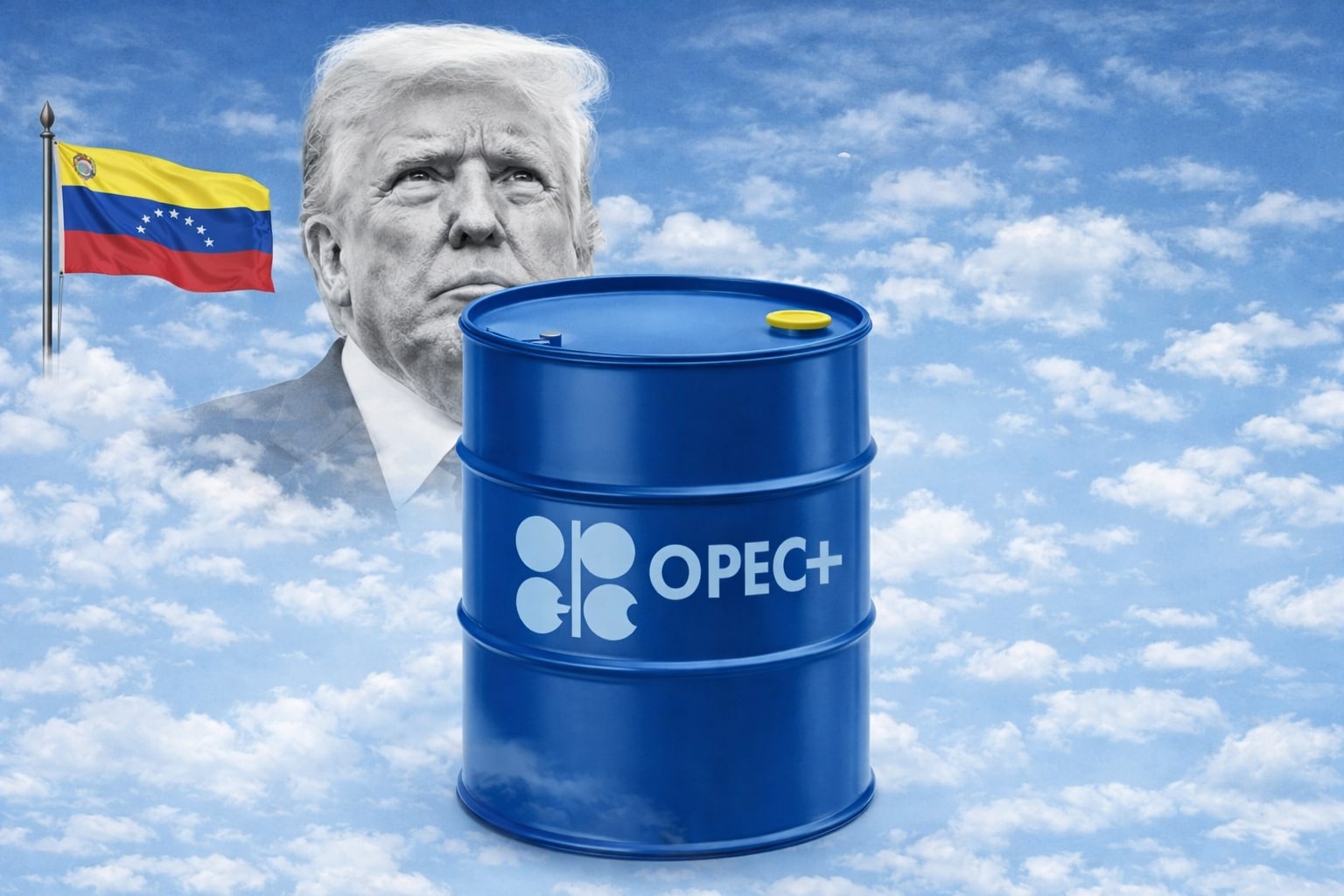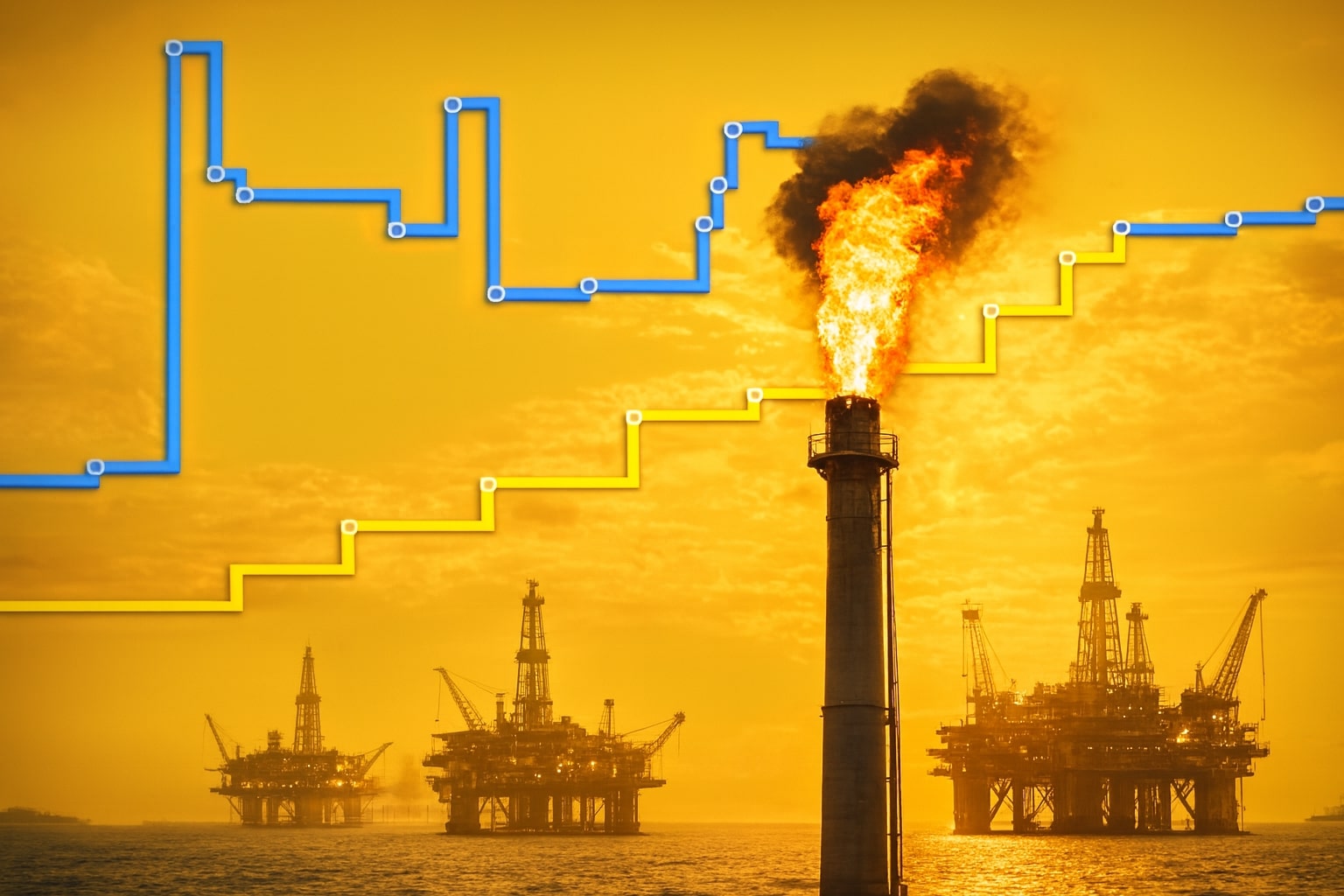
Natural Gas Price Forecast - NG=F Steadies at $3.27 as Record U.S. Output Meets Global LNG Expansion
Natural gas stabilizes above key $3.20 support with record 108 Bcf/d output, LNG exports at all-time highs, and IEA forecasting 300 bcm of new capacity by 2030 | That's TradingNEWS
Natural Gas (NG=F) Holds Near $3.27 as Global LNG Boom and Record Output Shape Volatile Outlook
U.S. natural gas futures hovered around $3.27 per million British thermal units (mmBtu) as traders balanced the impact of surging production, record LNG exports, and fluctuating weather forecasts. Despite colder trends in the northern U.S., strong supply and elevated storage levels kept the November front-month contract (NG=F) constrained, down nearly 0.9% to its lowest since mid-October. The market remains technically fragile yet fundamentally supported by the accelerating global LNG expansion.
Record Output and Elevated Storage Define Short-Term Pressure
Dry gas production across the Lower 48 remains at historic highs, averaging 108.0 billion cubic feet per day (Bcf/d) — just shy of July’s all-time record of 109.2 Bcf/d. According to LSEG data, U.S. output is up 5.5% year-over-year, allowing energy companies to inject substantial volumes into storage. The latest EIA report confirmed a +87 Bcf build for the week ending October 17, above expectations of +70 Bcf, lifting inventories to 3,878 Bcf, which is 4.5% above the five-year average and 0.6% higher than last year. Such strong inventory levels underscore the market’s ample cushion heading into the winter season.
LNG Exports Hit Record Highs, Balancing Domestic Oversupply
Rising export demand continues to absorb growing U.S. supply. LNG feedgas flows climbed to a record 17.4 Bcf/d on Sunday, surpassing the prior day’s 17.3 Bcf/d peak and setting a new all-time high. Venture Global’s Plaquemines terminal in Louisiana alone accounted for 3.9 Bcf/d, marking one of the highest single-facility draws ever recorded. Overall, LNG feedgas averaged 16.6 Bcf/d in October, compared to 15.7 Bcf/d in September, reflecting strong export growth. Pipeline shipments to Mexico remain steady at 6.2–6.7 Bcf/d, while exports to Canada average 2.2 Bcf/d, keeping North American trade robust despite domestic supply saturation.
Weather Models Add Uncertainty to Short-Term Forecasts
Colder air moving through the Midwest and Northeast has lifted heating demand, yet forecast inconsistencies continue to cap momentum. The U.S. Global Forecast System (GFS) now estimates 214 heating degree days (HDDs) over the next two weeks, up from 193 previously but still close to long-term seasonal norms. Total gas demand, including exports, is projected to rise from 108.7 Bcf/d this week to 109.4 Bcf/d next week, modest growth that remains outpaced by supply. Traders are monitoring whether a sustained cold pattern can shift sentiment, as prior rallies above $3.57 have repeatedly failed to hold.
Technically, the 200-day EMA near $3.15 serves as critical support, while resistance is set at $3.57 and $3.82. A confirmed break above those thresholds could push prices toward $4.21, the next key resistance zone. Despite short-term fatigue, the stochastic oscillator remains moderately bullish, supporting potential upside if colder trends persist into early November.
Global LNG Expansion to Transform Market Structure by 2030
The International Energy Agency (IEA) projects a massive 300 billion cubic meters (bcm) of new LNG liquefaction capacity to be added globally by 2030, with the United States and Qatar leading the charge. More than 80 bcm of capacity has already been sanctioned in the U.S. this year alone, marking a historic milestone for the American LNG industry. This expansion is expected to ease global supply constraints, boost energy security, and stabilize prices after years of post-Ukraine volatility.
Benchmark spreads continue to reinforce export incentives. The Henry Hub sits at $3.30/mmBtu, while Europe’s Title Transfer Facility (TTF) trades at $10.66, and the Japan-Korea Marker (JKM) at $11.21. These wide margins ensure that U.S. LNG remains competitive internationally, even as prices normalize from their 2022–23 peaks. The IEA forecasts global gas demand growth of 1.5% annually through 2030, equivalent to an increase of 380 bcm, with Asia-Pacific absorbing half of that growth and the Middle East contributing another 30%.
Regional Price Differentials Reflect Infrastructure Bottlenecks
Disparities among regional hubs highlight persistent logistical challenges. The Henry Hub closed at $3.21, while Waha Hub in West Texas continues to underperform at $1.77 due to pipeline congestion and excess Permian supply. In contrast, SoCal Citygate and Algonquin Citygate both trade near $3.20, indicating more balanced conditions in the western and northeastern U.S. Canadian benchmark AECO remains weak at $1.10, reflecting limited storage and export routes.
Even with the launch of the 2.5 Bcf/d Matterhorn Express pipeline last year, Permian takeaway constraints remain a drag on local pricing. The forward curve for Waha shows gradual strengthening beyond 2027, supported by infrastructure investments, including Kinder Morgan’s $9.3 billion project backlog. Yet near-term oversupply remains a structural headwind for producers until new capacity fully absorbs regional output.
Shifting LNG Contract Dynamics and Emission Constraints
Global LNG contracting trends are evolving toward flexibility. The IEA projects that by 2030, over half of LNG volumes will be sold under destination-free contracts, allowing buyers to redirect cargoes based on market conditions. This transformation enhances liquidity but also heightens exposure to price volatility. Simultaneously, new projects in the U.S. and Qatar are embedding carbon capture and storage (CCS) systems to reduce emissions intensity — a critical step to maintain competitiveness in European and Asian markets under tightening climate policies.
Geopolitical and Environmental Risks Add Layers of Volatility
While Hurricane Melissa is not expected to hit the U.S. Gulf Coast, its path near the Caribbean highlights the fragility of supply chains. Storm-related disruptions can either cut output or limit LNG exports, with unpredictable price effects. Roughly 40% of U.S. power generation relies on natural gas, making infrastructure resilience essential. Any major Gulf outage could temporarily spike prices above $4.00, especially during peak winter demand.
Read More
-
Broadcom Stock Price Forecast AVGO Stock Sinks to $324 After $414 Peak – Is $390 the Next Target?
17.12.2025 · TradingNEWS ArchiveStocks
-
XRP Price Forecast: Can XRP-USD Price $1.64 Hold Before a Run Toward $2.50–$3.00?
17.12.2025 · TradingNEWS ArchiveCrypto
-
Oil Price Forecast: WTI at $56 and Brent at $60 as Trump’s Venezuela Blockade Collides With 20% Yearly Slide
17.12.2025 · TradingNEWS ArchiveCommodities
-
Stock Market Today: Dow Outperforms at 48,271 While S&P 500 and Nasdaq Slide on Oracle AI Debt Fears
17.12.2025 · TradingNEWS ArchiveMarkets
-
GBP/USD Price Forecast - Pound Under Pressure as Softer UK CPI Drags Cable Back Toward 1.33
17.12.2025 · TradingNEWS ArchiveForex
Medium-Term Outlook: Neutral Near-Term, Bullish Beyond 2026
The short-term natural gas setup remains range-bound, with prices oscillating between $3.15 and $3.82, but the medium-term fundamentals suggest tightening conditions. Rising LNG exports, expanding power generation, and persistent industrial use will likely erode the current surplus by late 2026. The anticipated trading range for Q4 2025 stands between $3.05–$3.82, with a potential breakout toward $4.21 if weather-driven demand aligns with strong export flows.
From a valuation perspective, current levels undervalue the structural transformation underway in global gas markets. As the U.S. cements its position as the world’s top LNG exporter, capacity growth, and improved contract flexibility are expected to underpin demand for Natural Gas (NG=F).
Given the convergence of bullish export trends, manageable inventories, and expanding international demand, Natural Gas (NG=F) warrants a Buy stance for medium- to long-term investors. While short-term resistance may cap near-term rallies, the fundamental trajectory points decisively higher, with price potential toward $4.30 as the global LNG super-cycle accelerates into 2026–2027.



















